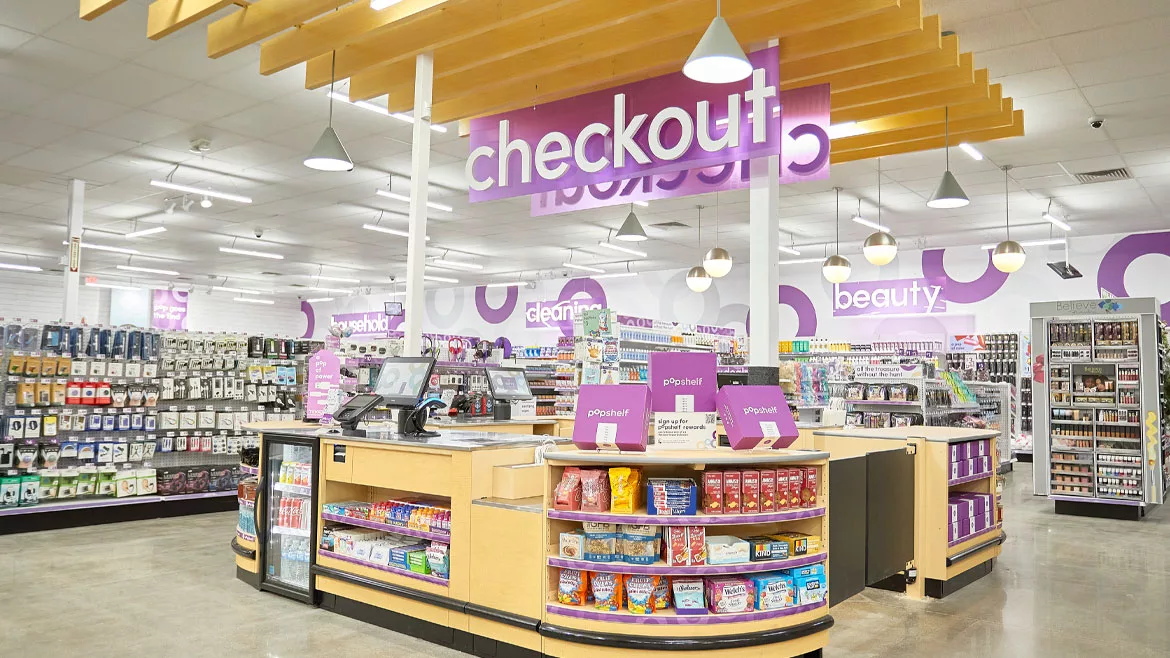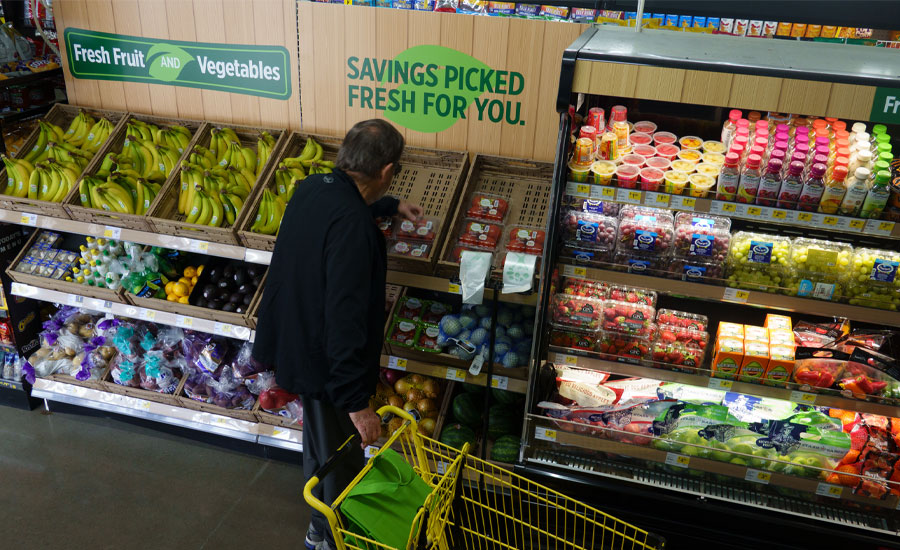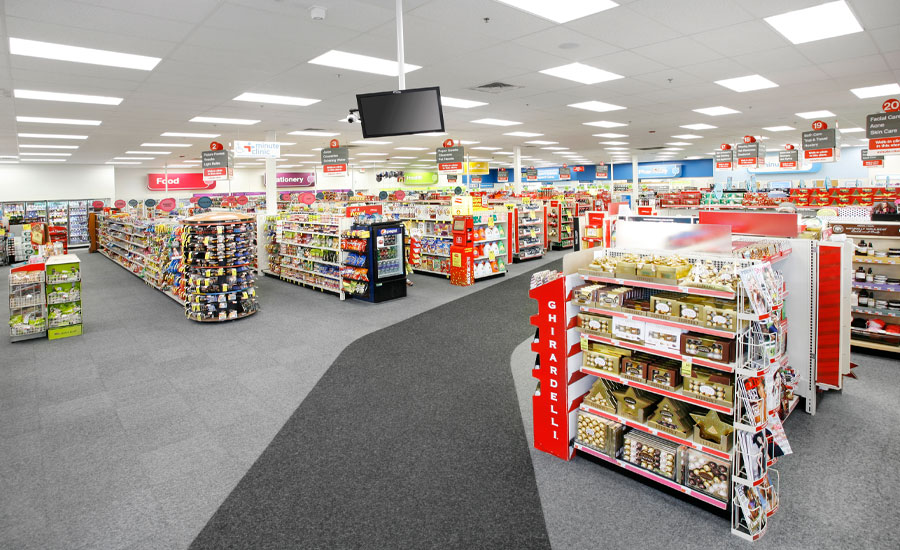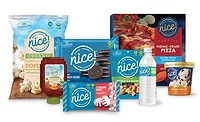Channel Strategies
Value, variety spur growth for drug, dollar outlets
Shopping shifts prompt growth for limited assortment stores

Image courtesy of Dollar General
Rising to fame in the late ‘60s as the lead singer of the rock band Genesis, English musician, record producer and activist Peter Gabriel has since continued to focus on producing and promoting world music through his Real World Records label. Gabriel, who also has been involved in numerous humanitarian efforts, including developing The Elders with Richard Branson, a human rights group launched by Nelson Mandela in 2007, is quoted for having said: “As many an architect will tell you, human behavior changes according to the environment.”
Considering today’s current economic environment, where consumer behavior has changed significantly since the onslaught of the COVID-19 pandemic, experts note that inflation also is having a momentous effect on retail operations, including the drug and dollar store channels.
According to Diana Smith, associate director of retail and eCommerce, and Katie Hansen, senior analyst of retail and eCommerce at Mintel, Chicago, “inflation is now causing more shopping shifts.”
“Not only did the pandemic have a direct impact on consumer shopping behavior, but now record-high inflation also has consumers being more mindful about how they shop,” the Mintel experts say. “Value-seeking behaviors are taking many shapes, ranging from simply spending less and saving more, changing shopping routines including where one shops and what one buys, and taking a more mindful, holistic approach to what value entails.
“One-third of consumers are closely looking at cost-per-unit-size, an important measure of value amid shrinkflation,” they continue. “Cost per unit is an arena of opportunity for retailers to promote value and to encourage consumers to pay attention to it. Consumer focus on cost per unit also signals opportunities for warehouse clubs as well as value-size products.”
Joan Driggs, vice president of Thought Leadership at Chicago-based Information Resources Inc. (IRI), echoes similar sentiments, noting that by the end of last year, inflationary challenges have only increased.
“Inflation ended the year up 6.5%, but December saw food and beverage inflation of 10.4%, so while painful overall, it’s even harder for consumers when it comes to their everyday purchases,” she says. “In terms of shopping behaviors, pantry stocking — those big stock-up trips— are down from the peak of the pandemic, but they’re still higher than pre-pandemic, which is a nod to the increased levels of food and beverages consumed at home, or sourced from retail, versus pre-pandemic. But we see quick trips — just buying what you need — ticking up, which is a result of inflation.
“Other types of trips, including special purpose or fill-in remain flat compared to the prior year (52 weeks ending Nov. 6, 2022). The types of stores that people are shopping in are also changing,” Driggs continues. “Only the club channel is growing in terms of both dollar sales and unit sales. The drug channel has a dollar sales increase of 5%, but unit sales have declined 4.4%. In the dollar channel, dollar sales are up 4.7%, but unit sales are down 9.6%.”
Dollar stores appeal to budget conscious consumers
As inflation continues to limit consumers’ spending power, experts highlight the various challenges, as well as how current economic conditions have worked to benefit the dollar store channel, specifically.
Brigette Thomas, senior research analyst at IBISWorld, New York, notes that with more consumers shifting toward value-seeking behaviors, dollar stores have expanded customer demographics.
“Dollar chain stores, like Dollar Tree stores and Dollar General, have seen an increase in sales as consumers have increasingly shifted to shopping at budget-friendly stores,” she says. “Traditionally, dollar chain stores attract lower-income consumers, but as inflation has increased, more higher-income consumers have shifted to shopping at dollar chain stores.
“However, dollar chain stores are also experiencing increased costs because of inflation, so they either pass on the increase in cost to consumers, which could decrease demand, or they can absorb the cost increase, which pressures profit margins,” she continues.

Image courtesy of Dollar General
Echoing similar sentiments, Mintel’s Smith and Hansen note that, amid inflation, with consumers’ prioritizing value to a greater degree, it stands to reason that the dollar channel is benefiting from consumers’ current shopping habits.
“By their very nature, dollar stores’ relatively (perceived) low prices meet the needs of these budget-conscious shoppers; the sector ranked third among a list of retailer types shopped the past 12 months after mass merchandisers and Amazon with nearly a majority (46%) shopping the channel,” they explain. “Dollar stores ranked second when it comes to in-store shopping (46% did so).”
Further the sector has benefited from consumers resuming pre-pandemic behaviors and returning to shopping more in physical stores, Smith and Hansen say.
“Consumers are accustomed to shopping the dollar channel in-store more so than online — and to a greater extent compared to other retail sectors — because of the unique treasure hunt experience that is best achieved in-store,” they explain. “Proof of the sector’s success is its continued expansion.
“Dollar stores are also leading new retail store openings, indicating a growth mindset,” Smith and Hansen continue. “The leaders Dollar General and Dollar Tree reportedly were to have opened 1,300 new stores in [fiscal year] 22, and other smaller dollar chains are expanding their footprints as well.”
Moreover, Smith and Hansen point to dollar stores expanding clientele, opening stores in not just low income areas, but also places to attract middle-income and upper middle-income consumers.
Dollar stores also are experimenting with new, more “upscale” store formats to attract such audiences, they note.
“Dollar General’s DG Market and pOpshelf store format is an example. They’re also remodeling several stores to add refrigeration and make room for expanded assortments,” Smith and Hansen say. “To that point, dollar stores have been busy trying to expand their food assortments to capture a greater share of the grocery market. Efforts include adding more prepared foods and other types of foods with higher profit margins, expanding private label assortments and adding fresh produce and other healthier items.
“Significant investments in the supply chain have yielded efficiencies that are helping dollar stores mitigate the effects of inflation on their bottom lines and stay competitive,” they continue. “In what might seem like a backward move, some chains (e.g. Dollar Tree) have even increased prices to combat inflation effects. Even at a higher-price point, they’re still seen as competitive within the larger retail landscape.”
Yet, despite consumers’ perception that dollar stores offer the cheapest items, Smith and Hansen note that these retailers might not be considering the cost-per-unit-size for consumables as consumers look to manage limited budgets.
“As shown previously, Mintel research finds that one-third of adults are looking at cost-per-unit-size to assess overall value, with those who describe their financial situations as tight or struggling even more likely to do so,” they say. “As price-conscious consumers get savvier about evaluating value, this is an area where dollar stores might be at a disadvantage, especially if competitors start to more aggressively promote the value they provide on a cost per unit basis.”
Drug stores meet challenges with product, service expansion
As inflation has been a major concern for the drugstore channel and consumers alike, experts highlight the various challenges this channel is facing as well as strategies to further engage consumers.
As drug stores aren’t necessarily known for low prices, inflation has caused these stores to explore ways to offer savings and value to their shoppers, Smith and Hansen say.
Although more affluent consumers might not have changed their lifestyle as drastically as lower-income individuals since the pandemic — with the rise of inflation — many consumers across income levels were looking for less expensive versions of products such as generic prescriptions or store brand items, they explain.

Image courtesy of CVS Pharmacy
“It also meant that drug stores were not as top-of-mind for consumers searching for products within beauty or health and wellness categories as other retailers such as mass merchandisers,” Smith and Hansen say. “In fact, 60% of consumers chose to shop at Walmart for items traditionally sold at drug stores compared to 44% at CVS and 41% at Walgreens.”
Yet, where drug stores might not always win on price, they can win with expertise, Smith and Hansen note.
“They can lean into their already existing expertise in health and wellness to provide more tailored recommendations for consumers — for example, how to care for dry skin or the best ways to manage allergies. This will show consumers that drug stores are a destination for more than products alone,” they explain. “It will show that they are a place to absorb knowledge, ask questions and find the right solutions guided by industry experts.”
Moreover, with consumers prioritizing health and wellness, Smith and Hansen suggest that through product expansion, drug stores can help further engage consumers.
“CVS, for example, just launched One+Other, a new personal care brand,” they note. “The brand offers products from cotton balls to nail polish remover that range in price from $3 to $25.
“The self-care movement gained momentum throughout the pandemic as consumers looked for ways to take care of themselves in a high stress environment. Refocusing on the basics and making them affordable will help consumers participate in self-care activities that are still needed/desired without having to break their budgets,” they continue.
Facing challenges head-on
With self-care trends on the rise, product expansion continues to be a driving force, benefiting both drug and dollar store channels, experts note.
“Since consumers increasingly place a high value on convenience when shopping, dollar chains have adapted by expanding their product offerings,” IBISWorld’s Thomas says. “For example, Dollar General has expanded into healthcare by carrying more over-the-counter medications and other health and nutrition products.
“Most dollar chain stores now carry a large range of products, including food and beverages, cleaning supplies, toys and household decorations,” Thomas continues. “By expanding product offerings, dollar chains have remained competitive as a one-stop shop for time-poor consumers.”
Further, as most dollar chain stores offer beverages, including soda, water, drink mixes, coffee and tea, Thomas notes that new-age beverages, advertised as healthy alternatives to soda, juice, etc. have growth potential in dollar chain stores.
“Drinks including kombucha, protein drinks, or other drinks with probiotics have gained popularity as consumers have become increasingly health conscious,” Thomas says. “But, one of the largest growth drivers has been dollar chains expanding into the alcohol market.
“However, because of differing state alcohol laws, the availability of beer and wine at dollar chains can vary. Nonetheless, the relatively recent addition of beer and wine into dollar chains’ beverage offerings has largely benefited the industry,” she continues.
Yet, despite expanding demographics, product expansion, eCommerce continues to pose various challenges to limited assortment stores.
“Both dollar stores and drug stores tend to still see more in-store foot traffic rather than digital traction,” Smith and Hansen explain. “Per Mintel data, 46% of consumers shopped in-store at dollar stores versus 17% online and 42% shopped in-store at drug stores compared to 20% online.
“eCommerce activities are more difficult for dollar stores to lean into and profit from as their business models weren’t initially really set up for that kind of activity; however, they do still provide some digital offerings such as digital coupons and product sneak-peeks via their apps as well as in-store pickup and delivery options,” they continue.
On the other hand, when it comes to drug stores, these stores are “catching up” with omnichannel expectations, Smith and Hansen say.
“The pandemic had drug stores re-evaluating their offerings which kicked omnichannel options such as curbside pickup and even delivery into a higher gear,” they explain. “More than a third (34%) use social media to learn about drug stores’ promotions and offers. While it’s likely that consumers will continue to choose to shop with drug stores mostly in-store, the channel’s digital offerings will play an important role in allowing consumers to shop how, where, and when they want to.”
Overall, as consumers expect, and will continue to expect, shopping with retailers in the way best suited to their needs, digital components of the shopping experience are here to stay, Smith and Hansen say. “Brands and retailers alike need to be prepared to offer consumers a way to digitally engage with them in order to provide the seamless experience shoppers seek,” they add.
Moreover, while limited assortment stores can offer value, convenience and necessary essentials, “that alone is not enough for the modern day consumer who wants to align with retailers whose missions and ethics match their own,” Smith and Hansen note.
“If retailers find that they must pass along some of their own higher costs to consumers, it’s best to be upfront and transparent about this rather than hope shoppers don’t notice,” the Mintel experts say. “Of course, retailers could gain some respect by going the other direction as well — dropping prices in spite of inflation and explicitly calling this out.”
Looking for a reprint of this article?
From high-res PDFs to custom plaques, order your copy today!






